First things first: don’t pull the ‘clutch’ in while riding one-handed. You see, there is no clutch on the XMAX and old habits die hard. I’m casually flipping down my visor as I’m accelerating away and then, as I go for the clutch, I’m almost headbutting the dash and spearing off into a gutter. Luckily it was dark and nobody saw me. Needless to say, I have limited experience with scooters and most of the ones I have ridden were of the 50cc two-stroke variety. But the experience I have had has told me that you either get scooters, or you don’t.
Forget your lightweight Uber Eats delivery bike: the XMAX is big, it stands tall and proud showing off its sporty looks with trick-looking LED lighting and sporty fairings. It has punch to match its looks, too. A super-efficient, fuel-injected, water-cooled 292cc single-cylinder engine is tucked away down low near the belt drive keeping the centre of gravity nice and low. Protecting you from the elements is a sizeable windscreen and a wide front fairing to tuck behind.

Clutch mishaps aside, getting to know the XMAX is a straightforward affair. It has a smart key system so fumbling a key with your gloves on is a thing of the past – just turn the ignition knob to on, squeeze the brake and fire it up with the start button. The same knob also opens the fuel cap and unlocks the storage compartments.
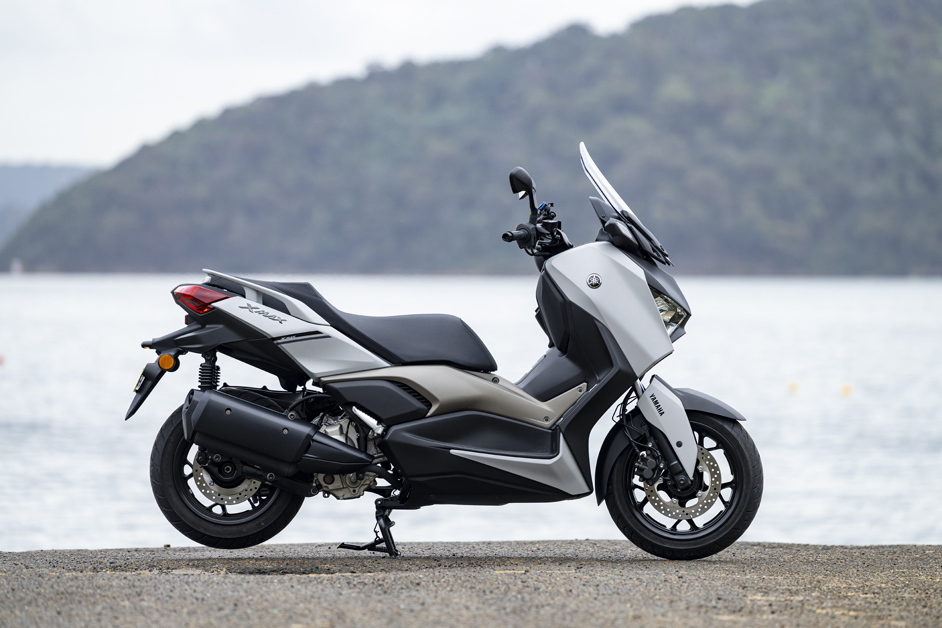
As we’re all now aware, the front and rear brake controls are ’bar mounted and there is no span adjustment available on the levers. The buttons and switches are all standard motorcycle items and easy to navigate.

Up front are two display screens. The top one provides basic info and is a black-and-white LCD. Speed, trip meters and fuel level are all shown here as is – so I found out – a snow and ice warning. The bottom screen is a full-colour TFT display which is controlled from the left switchblock. The screen can be cycled through fuel consumption data, settings, music controls, phone calls, weather, navigation and tacho.
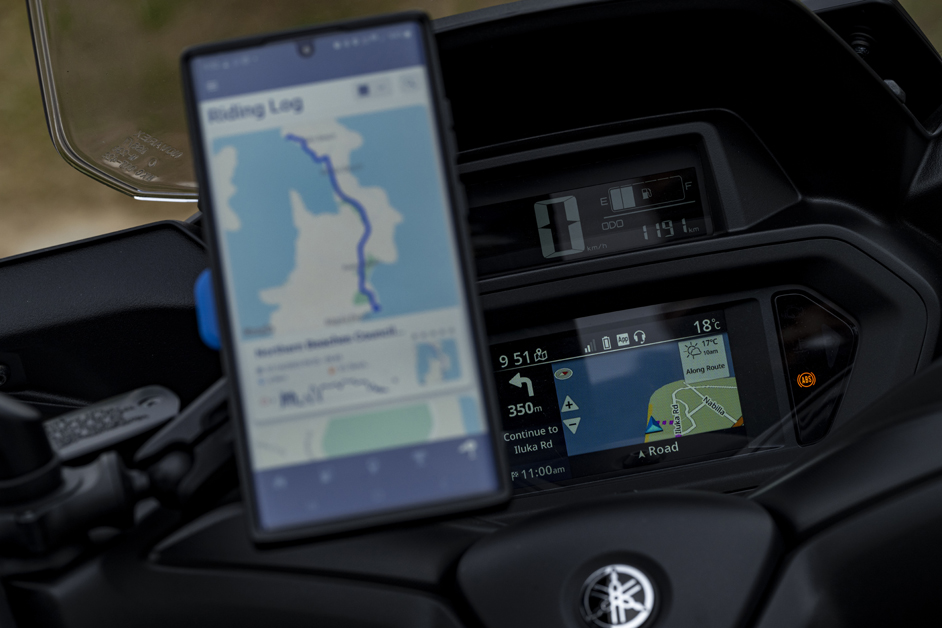
The XMAX has bulk storage available. The underseat storage can hold two full-face helmets and still fit some other gear in at the same time. So when you park the XMAX you can have your goodies locked away under the seat, out of sight and out of the weather.
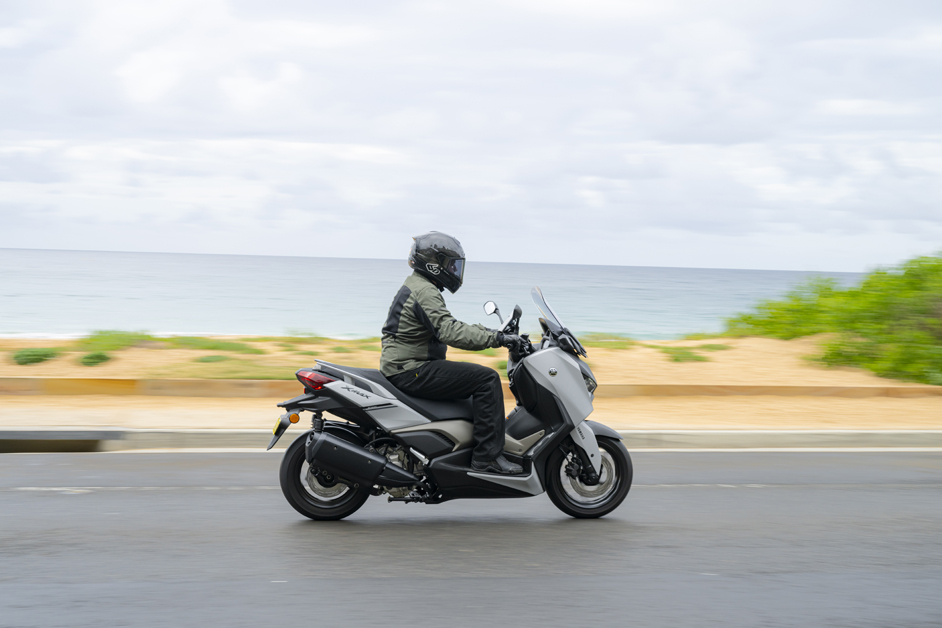
There are two glovebox-style compartments, too. One is lockable with the ignition switch and houses the 12-volt power outlet, and the other can be popped open at any time, even while riding if you’re keen.
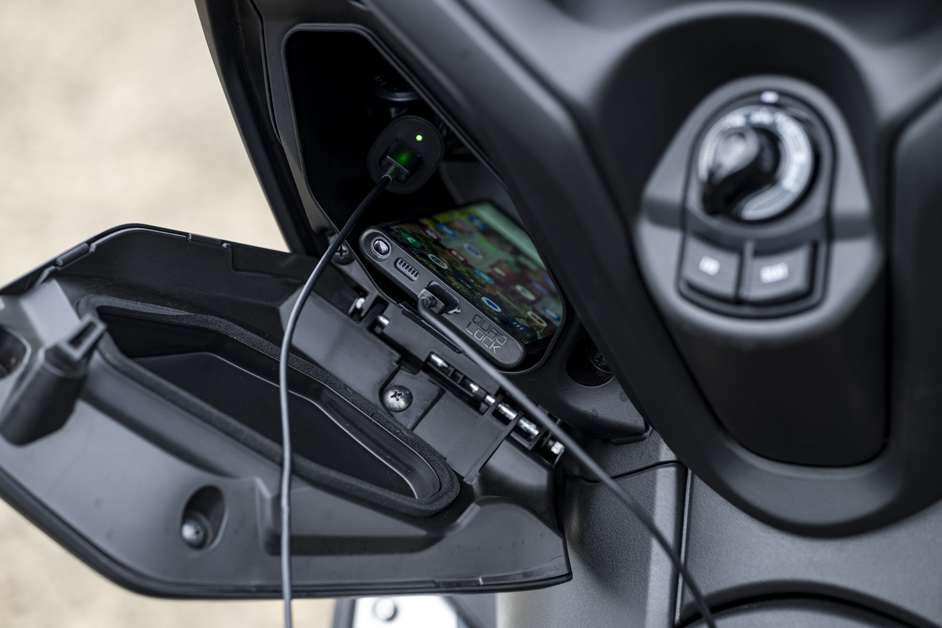
The XMAX is towards the sportier end of the Yamaha scooter range and out-gunned only by the 560cc TMAX. It’s learner legal, but goes well and it does get up to road speeds quite rapidly. You just snap the throttle open and get ahead of the traffic with minimal fuss. Darting through traffic is like a walk in the park. Thanks to the low centre of gravity and small wheels (15-inch front and 14-inch rear), the handling is light and agile so changing direction is super quick; feet-up, full-lock U-turns can be performed with ease once you get a feel for it. After I became accustomed to activating the rear brake in my left hand, I find myself using it more and more.

The rear brake feels more powerful than the front and makes the XMAX squat, so I would favour applying the rear brake first before feeding on the front brake. These aren’t superbike brakes, though, and a fair squeeze is necessary to bring the 182kg scoot to a quick halt.
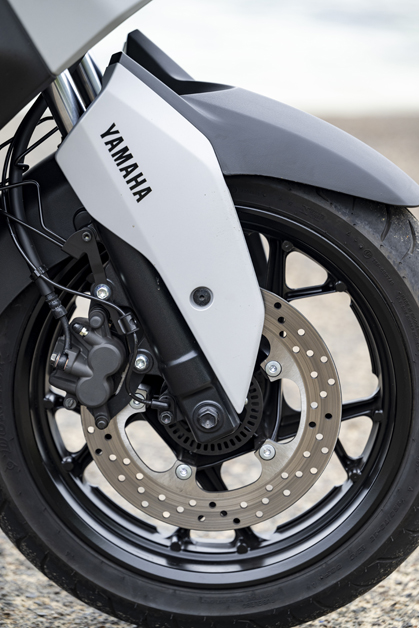
I found myself on a twisty backroad and it felt rude not give the XMAX a bit of thrashing through the bends. As you’d expect, it’s a long way from the sweetest handling bike I’ve ridden, but I did rail corners better than I ever thought possible on a scooter. It can achieve a healthy lean angle before scraping the centrestand on the ground, too.
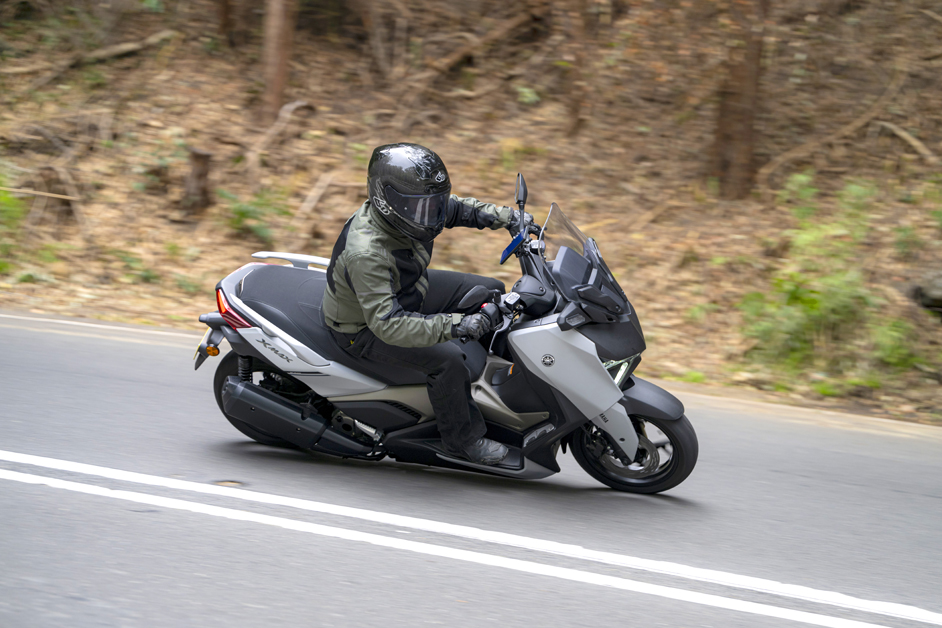
It is a barrel of laughs in the smooth stuff, but when things get a bit bumpy the suspension’s limits are reached pretty rapidly. The Yamaha boasts a conventional fork at the front and twin shocks at the rear to make for sporty handling, and while the handling is sporty, it does not translate well into comfort on poor road conditions.
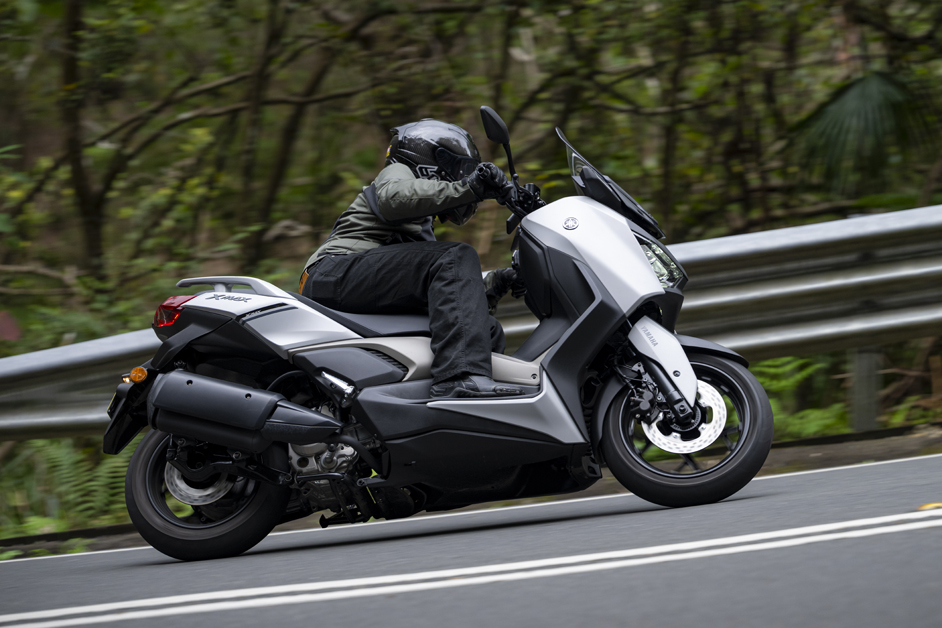
It could be the fundamental design of the engine being part of the swingarm that makes the scooter ride bumps differently to a normal bike, and it is quite harsh on scrappy roads. But the XMAX also boasts traction control, which is an added safety blanket in poor conditions and when negotiating tram tracks, puddles and gloop left by the garbo.

Despite its excellent weather protection, the XMAX is quite slim which makes it a lane-filtering weapon – I shaved bulk time off my commute. At higher speeds, the XMAX is super stable and cruises effortlessly – probably a touch too easy as I found myself creeping over the speed limit if I didn’t keep my eyes glued to the speedo. Maybe it’s the variable belt drive, but I don’t find it easy stay at a constant speed. It cruises so effortlessly that sitting on 100km/h feels slow. I wish it had cruise control, though.
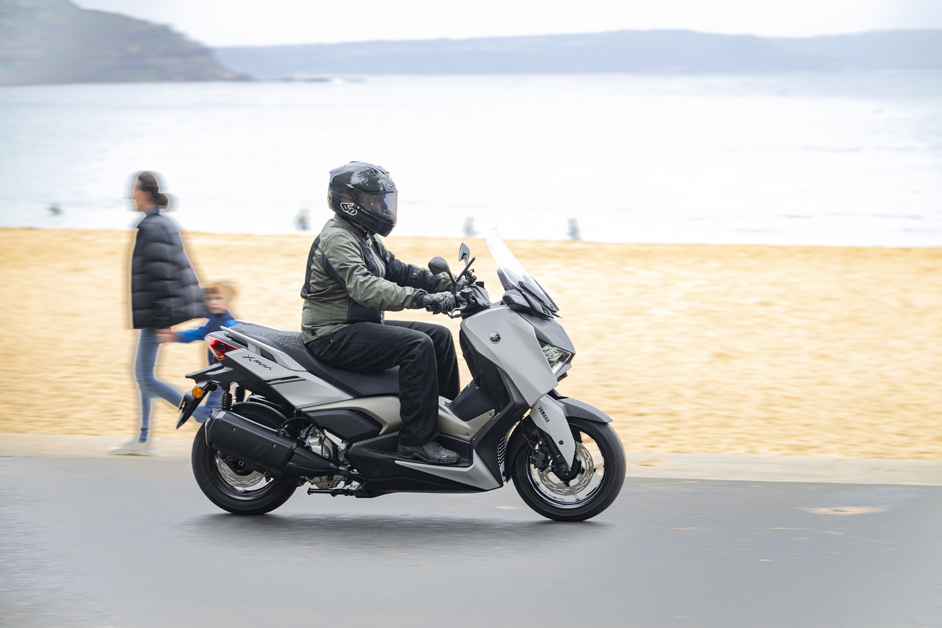
The best I can do is run the Garmin StreetCross navigation app which beeps in your headset each time you go over the speed limit and reminds you to dial it back a bit. The engine is super quiet; you can hardly hear it even running at idle and similar when going over 60km/h – the wind noise is louder than the engine.
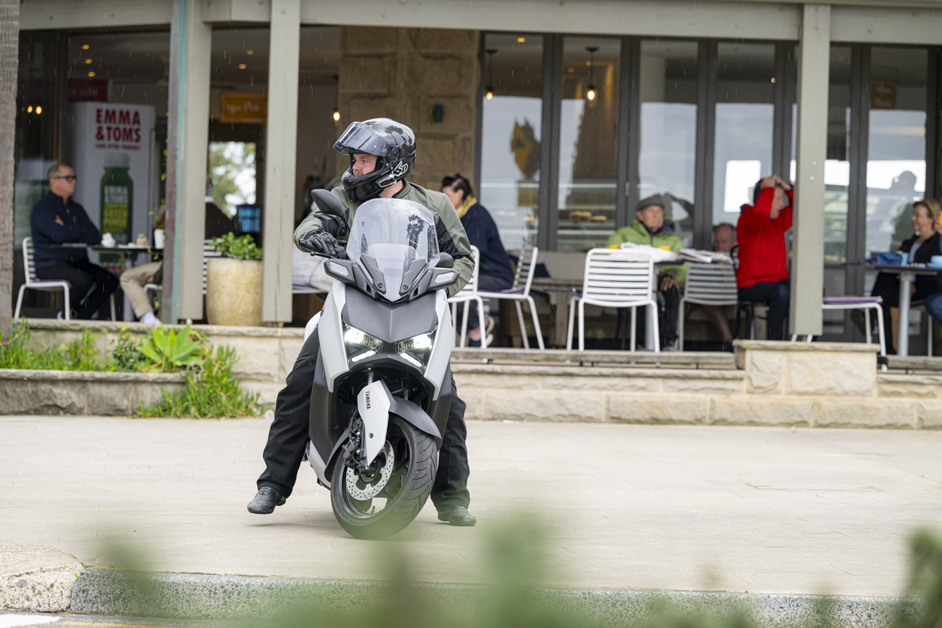
The windscreen offers decent protection but at times some kind of adjustment would be nice to be able to dial in a bit more or less wind protection. I imagine in the warmer months I would want some more airflow. The front fairing is wide enough for me to tuck my knees in out of the wind in the freezing cold.

The seat is comfortable. It is soft under your cheeks and some time and effort has been put into the shape of it to allow shorter people to still touch the ground while not losing any legroom for taller folks. There is ample room to move back and forward in the seat and, as the pillion seat is a step higher, the rider gets a bit of a bump stop to hold you in position.
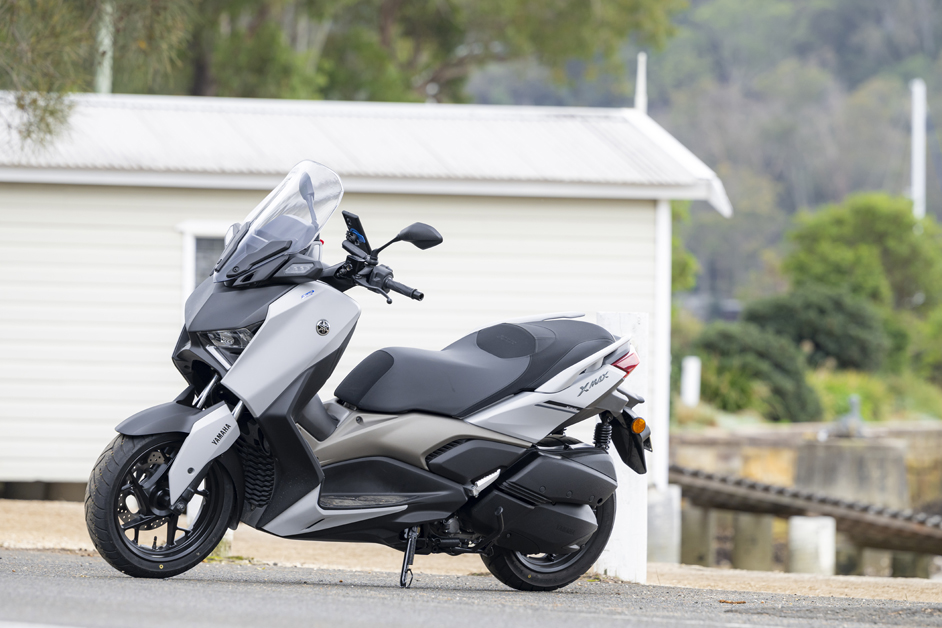
On my longest ride, I spent a good three hours straight on the seat and didn’t feel any unexpected discomfort. Things look good for a pillion also; there are a pair of fold out footpegs and large grabrails to hang on to so they are well catered for here.
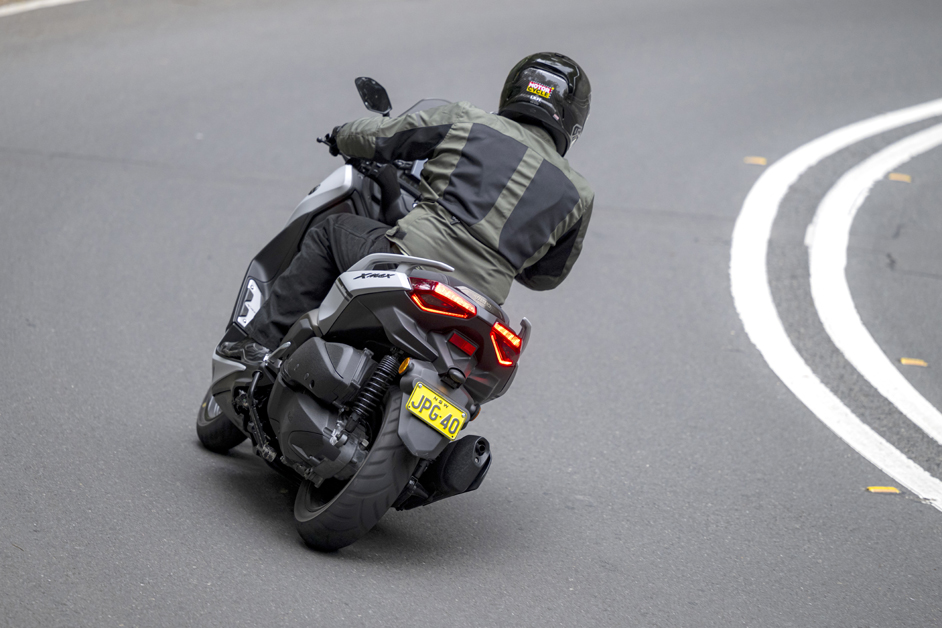
Scooters are designed to be economically viable machines. The XMAX, while being sporty, is still quite frugal. I clocked fuel consumption as low as 3.1L/100km. Thanks to Yamaha’s Blue Core technology, the engine is built using low-friction coatings and is tuned to make good power with low fuel consumption. The XMAX sports an 11-litre fuel tank mounted low in the chassis, so fuel stops could be up to 400km apart with a steady throttle hand. With 10,000km between services, it will be pretty cheap to maintain in the long run while being a relatively inexpensive initial outlay at $10,049 (ride away).
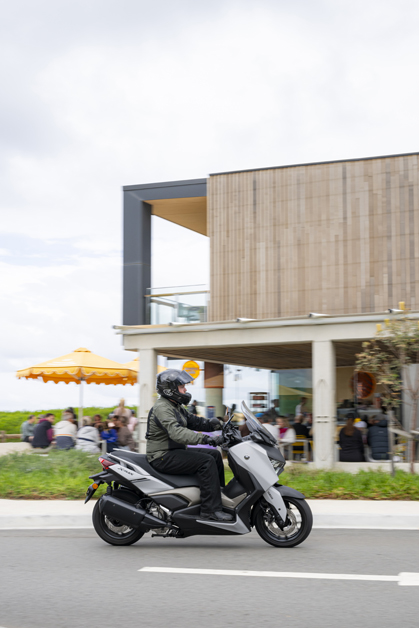
So, do I get the scooter thing? Yeah, I do. But I think most riders wouldn’t want a scooter as their only bike, no matter how good it is; it just won’t scratch that itch of going for a Sunday squirt with a couple of mates or a weekend away with a sidekick on the back.

However, scooters simply can’t be beaten in the convenience stakes for commuting or riding in the city. The time that a scooter can make up in traffic compared to other powered two-wheelers is immense, and you can do it with your shopping under the seat.
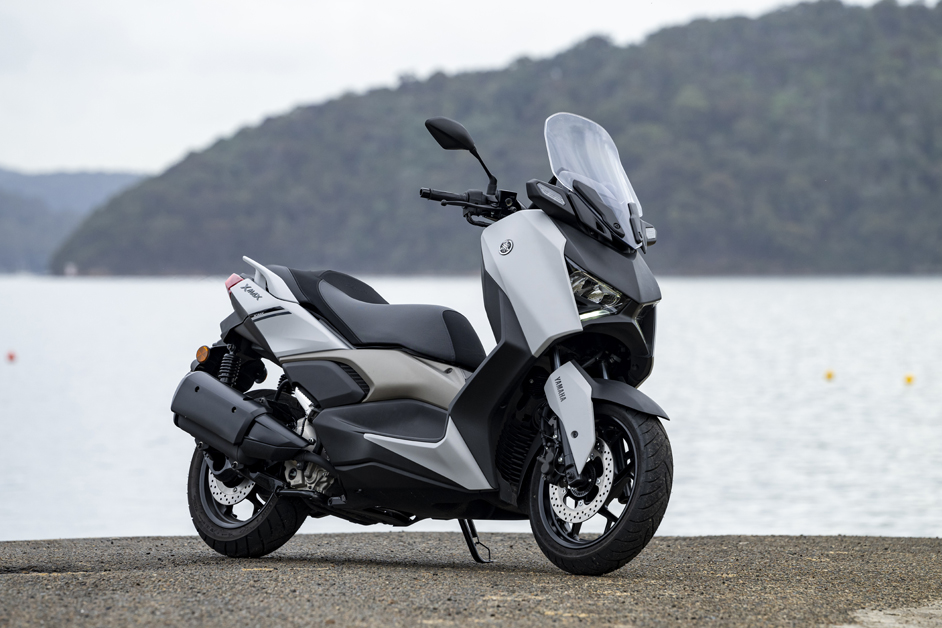
Test David Watt + Photography Incite Images











